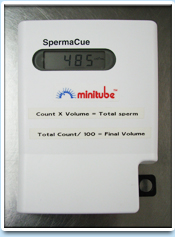

New and emerging research in various species has reported the advantages of storing spermatozoa at higher temperatures, such as 23 ☌ however, this topic has not been thoroughly investigated for ram spermatozoa. However, the reduced temperature during cold storage at 5 or 15 ☌ inflicts sub-lethal damage to spermatozoa, compromising sperm quality and the success of artificial breeding. Semen preservation is an essential component of reproductive technologies, as it promotes genetic gain and long-distance semen transport and multiplies the number of ewes able to be inseminated per single ejaculate. The article also contains some novel research supported ideas to provide laparoscopic insufflation that have been recently developed. Though the technique for performing LAI has been mentioned briefly through various research articles, this article serves as the first comprehensive review of the technique, equipment used, associated complications and useful practical tips that could serve as a guideline for clinicians interested in adding this service to their practice. Addition of LAI to a small ruminant/food animal practice can be quite profitable and professionally fulfilling, as long as an appropriate investment in equipment and adequate training of veterinarians and technical staff is implemented.

Hence, a thorough planning is essential to carry out the procedure safely and with consistent success rates. LAI can be associated with several complications as a result of inadequate patient preparation, poor technique or equipment failure. In addition, proper equipment and surgical expertise help in reducing patient morbidity and mortality rates. Success of LAI programs depends on proper implementation of estrus synchronization programs, patient selection and thorough knowledge of the reproductive physiology. There are several advantages of LAI that include efficient use of processed semen leading to higher pregnancy rates. Laparoscopic artificial insemination (LAI) is an intrauterine method of insemination, especially utilized in the small ruminant species to bypass their unique anatomically tortuous cervix.


 0 kommentar(er)
0 kommentar(er)
